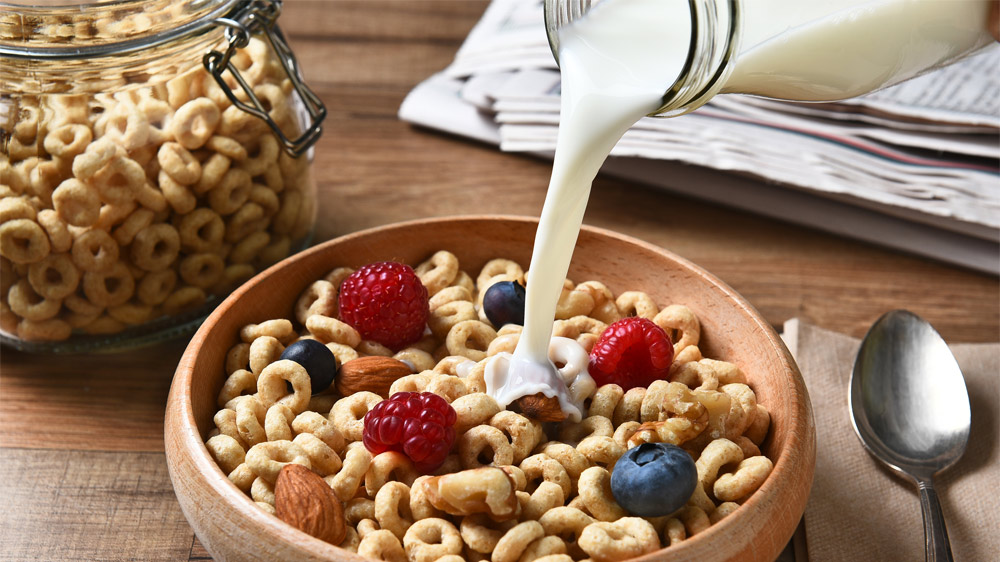Food fortification has a great potential to enrich the nutritional quality of various foods.

With growing urbanization and ever changing lifestyle, consumers have started looking towards a healthy and varied food options, which in turn has witnessed acceptance of healthy and fortified products. Today, consumers are looking at food, products which supplement their daily nutritional requirements and calorie count. In India, deficiency of vital nutrients is real and concerning, resulting in issues related to the overall growth and other health problems. Such deficiencies are also linked to today’s lifestyle, for e.g., Vitamin D deficiency is majorly due to the fact of very limited exposures to sun. Hence, fortification of daily staple products such as milk, wheat, sugar, oil and rice with core vitamins is a perfect choice for consumers to address their daily micronutrient needs. “Fortification is one aspect. The whole initiative is for safe and nutritious food,” shares Smita Mankad, Head, Food Fortification Resource Centre- FSSAI.
Why there is need for fortified food?
The availability of fortified foods helps to tackle the problem of malnutrition which is especially rampant in the developing countries, including India. Malnutrition is responsible for an estimated one-third of childhood deaths. Recent studies have indicated that the availability of fortified ready-to-use therapeutic food (RUTF) formulations is very useful for rapid weight gain in severely malnourished children, even in home settings. This strategy is recommended by WHO1 and underscores the need for food fortification. Also, at a time when there is lots of noise in the food service industry will also make the technology cost-effective if a food distribution system is present. “At the individual level, fortified foods increase productivity. At the national level, it positively impacts the economy by increasing the healthy workforce,” says Saurabh Arora, CEO- Food Safety Helpline.
Players like Mother Dairy have already started selling fortified milk with presence of Vitamin –A & D. “Over the years, Mother Dairy’s Bulk Vended “Token” milk has been fortified with Vitamin A. Recently, we have also started fortifying this milk with Vitamin D. The process of fortifying milk with Vitamins A&D has been further scaled up to the poly-pack milk variants as well. All our poly-pack milk variants, except Full Cream Milk, are now fortified with Vitamins A&D, making us amongst the first ones in the industry,” points Sandeep Ghosh, Business Head – Milk, Mother Dairy Fruit & Vegetable Pvt. Ltd, adding that their edible oil portfolio – Dhara, is consciously and aggressively pursuing fortification. “We were among the first ones to enter the fortified segment through edible oils with most of the variants being fortified. Today, Dhara’s entire range of edible oils, both filtered and refined, is fortified with Vitamins A&D,” shares Ghosh.
Food safety is the call
The Food Safety and Standards Authority of India (FSSAI), has also taken a proactive role in the area of food fortification. Importantly, it has recently drafted a Consultation Paper on Food Fortification 2 in collaboration with the Ministry of Women and Child Development, Govt. of India, which has highlighted the problem of nutrient deficiency in the Indian population. The FSSAI has issued a Press Note2 on January 31, 2017, requesting inputs from the various stakeholders and the general public in order to improve the quality of the paper. This consultation paper is likely to expedite improvements in the food fortification sector of the food industry in the near future. “The standard and logo is already available. We are looking at building the supplier market in open retails. We are also working on consumer awareness just to align them for the supply. We started the work already. Things are moving fast. It’s not mandatory but it’s entirely voluntarily,” adds Mankad who is leading the Fortification division.
Food fortification has a great potential to enrich the nutritional quality of various foods. The food industry is also committed to fortification of foods, which is highly encouraging. Side-by-side, this will benefit the food industry right from procurement of fortified foods, passage through the distribution chain, up to the end-users i.e. the consumers. Importantly, the Food Business Operators (FBOs) will become well informed and educated about the benefits of fortified foods, thereby increasing their expertise, competence and proficiency. This will help India to improve the nutritional status of millions of people, especially the malnourished and deprived economically weaker sections of society. “The entire process of fortification is followed as per the guidelines issued by the Food Safety Regulator,” adds Ghosh who has been following the requisite labeling norms wherein the contents of Vitamins A&D are duly mentioned. In addition, Mother Dairy is also using the recently launched Fortification logo by FSSAI on all their packaging. The logo is also significantly visible at Mother Dairy milk booths wherein the group retail fortified token milk. “We have been using varied mediums like digital, print, etc. to further promote the fortified range of milk,”Ghosh further adds.
Thus, food fortification being an important part of nutrition will surely help combat nutrition issue which the country is witnessing since age.
No comments:
Post a Comment